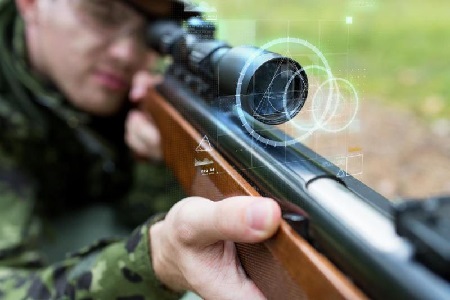 Tom Beckstrand served his country as a U.S. Army Special Forces Officer, including four combat deployments as a Team Leader to Afghanistan and Iraq. He also trained in numerous sniper and long-distance shooting courses, and on two of the above-mentioned deployments served as a Sniper Team Leader.
Tom Beckstrand served his country as a U.S. Army Special Forces Officer, including four combat deployments as a Team Leader to Afghanistan and Iraq. He also trained in numerous sniper and long-distance shooting courses, and on two of the above-mentioned deployments served as a Sniper Team Leader.So Beckstrand knows something about shooting–up close and at great distances–and uses those hard-earned shooting skills today as a Field Editor for Guns & Ammo, considered by many the country’s top firearms publication. He’s also an avid long-range shooting competitor, and
Beckstrand knows the importance of using your ballistic calculator correctly if you want to take a trip to the winner’s table.
“The most important inputs to make any ballistic calculator work correctly are muzzle velocity, ballistic coefficient, and sight height,” said Beckstrand. “Cheap chronographs will not give an accurate muzzle velocity, so the serious shooter needs to spend the money on a quality chrono.”
When you chronograph, make sure to measure the distance from the muzzle to the chrono unit. That input is also important to your Ballistic calculations.
Beckstrand added, “Ballistic Coefficients are available from ammunition and bullet manufacturers, and most of these coefficients the manufacturers provide are really quite accurate.” Ballistic Coefficient or BC, is a number that reflects how well a bullet cuts through the air. The higher the BC, the less the bullet is affected by air drag.
Beckstrand has observed many shooters struggling to make precision shots at a distance, despite using ballistic calculators. In many cases, he’s found they aren’t inputting sight height or they are guessing at the correct height.
“Sight height is the input most often overlooked and is usually the source of greatest error. I think a lot of shooters, especially those new to long-range shooting, simply don’t understand the importance of this input.”
Sight height is the distance from the centerline of the scope to the centerline of the bore. Some shooters, Beckstrand believes, just do a quick measure with a ruler or “eye it up” and estimate the distance.
“Really, you should use a set of calipers to measure the distance from the centerline of the scope to the centerline of the bore,” he noted. “Measure to .01 inch. I think doing it a few times and averaging the results is also a good idea.”
Using a ballistic calculator like Ballistic shows just how important that sight height input is. Using various loads, Ballistic’s calculations reveal that various sight heights for the same loads don’t have a huge effect-up close. However, as the shooting distances increase, just a half-inch of sight height variation can mean several inches up or down. Enough to cost you a trip to the winner table? Yes, indeed!
